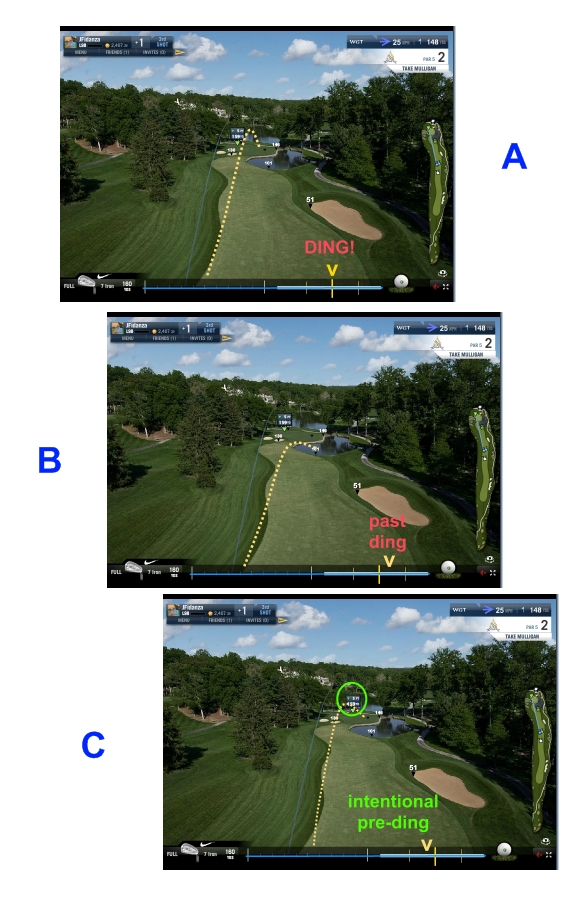EDIT : to be clear, this method in the example below is not pertaining to fading/drawing or hooking/slicing etc. rather just dealing with a fast meter with a hazzard, etc]
[This doesn't apply much to anyone who isn't using a starter ball]
The wonder of 'why hit a miss-ding at all?' may be understood by me, and anyone else who 1) commonly uses a starter ball w/ fast meter 2) someone who just can't seem to hit that silly dinger in time.
In fig A [Normal/common method] the strong wind is blowing toward the water so you aim left and DING and land the ball by the hole. [drink a Heineken, etc.]
In B the same thing is happening but, shucks, that super quick meter goes past so fast and you slice it and it rolls into the water like school kids on Spring break.
In C, you pre-aim not-so-far left (compared to A) to prepare an intentional pre-ding which has a less element of risk because you have more likelihood & time to click before the meter gets past the point of no return.
At worst you hit way too early but you still avoid the water and you're still set up for some kind of approach shot.
From my observation the meter is at it's fastest around the point of the Ding, not so much before it. That's a key point.

In test cases, speaking for myself, I have had less balls fall into the water attempting C than attempting A - (attempting A often has the common result of B)
So, I'll set aim for a pre-ding to decrease the element of risk -
and increase the achievability & chances of a non-detrimental green landing by allowing myself a larger margin of error. [Drink a Miller Light]
--
EDIT: But, ya, after I soon get a R1 (98) all the credits I will amass will go to various Proshop balls.